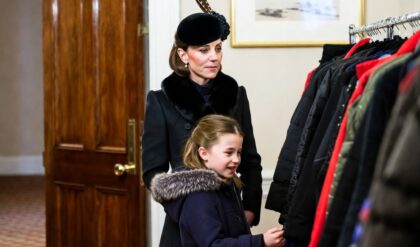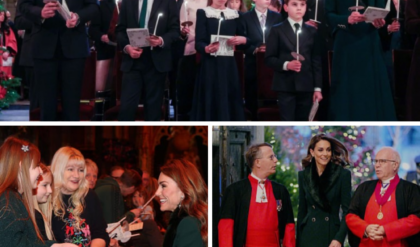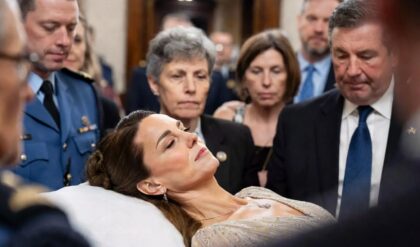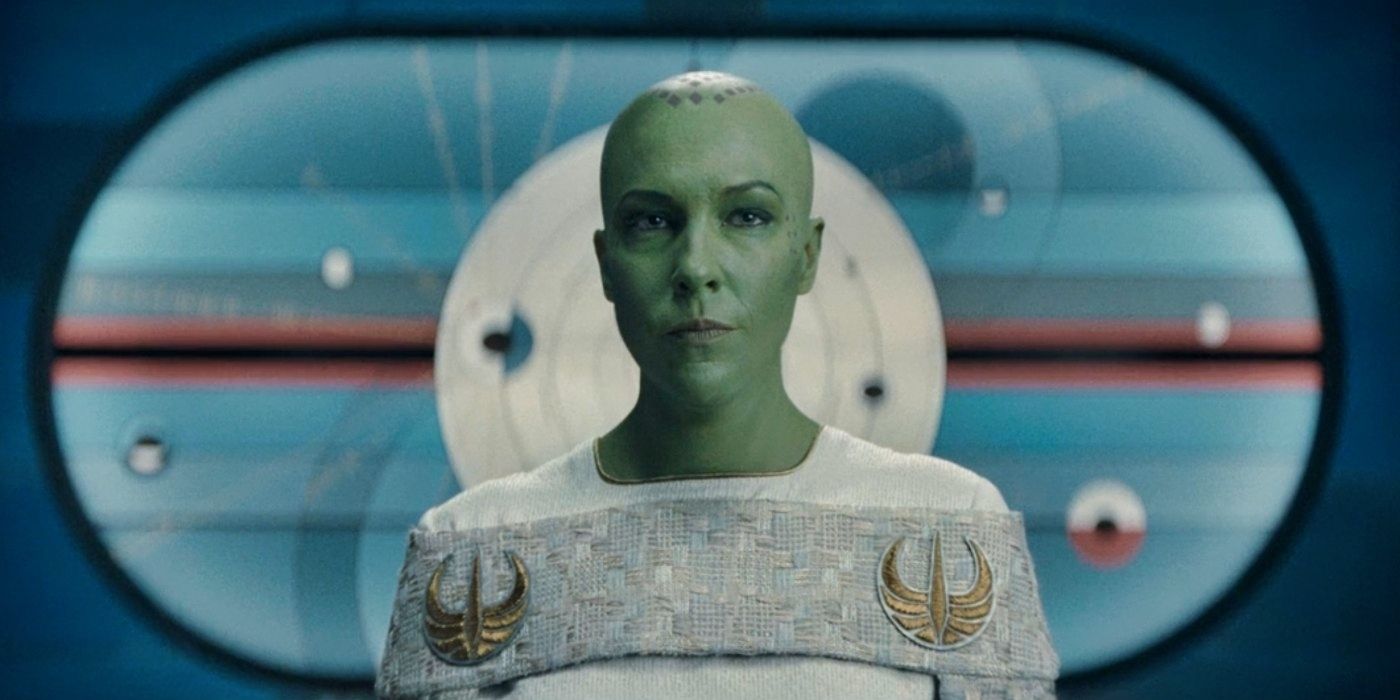
Appearing in the very last shot of the episode, Star Wars’ little green friend doesn’t play a large role, but his inclusion in The Acolyte Episode 8carries larger implications for the show’s story moving forward. Consulted briefly by Jedi Master Vernestra Rwoh (Rebecca Henderson) after she lies to a Senate Tribunal about the recent deaths of several Jedi, nothing is shown but the back of Yoda’s fuzzy green head before the credits roll. Still, given Vernestra’s discovery that her former apprentice is the galaxy’s true villain and solemn tone in speaking with Yoda, it’s likely the latter will take on a more active role if The Acolyte is renewed for Season 2. And while it’s nostalgic to see the legendary Jedi Master in his younger years, the Grand Master’s appearance unfortunately marks a more predictable direction for the series.
‘The Acolyte’s Finale Proves the Show Is at Its Best When It Stands Out From Mainstream Star Wars
Yoda’s cameo in The Acolyte’s finale isn’t necessarily a bad thing. Other recent Star Wars properties, such as Star Wars Rebels, have demonstrated how brief appearances by one of Star Wars’ most iconic Jedi Masters can enhance an unconventional narrative when used sparingly. However, with so many other shocking reveals and innovative visuals already employed in The Acolyte Episode 8, Yoda’s last-second contribution to the finale feels unnecessary. At a time when Vernestra’s own past affiliation with The Stranger (Manny Jacinto) has just been revealed, her consultation with Yoda distracts from the far more interesting backstory The Acolyte has only just begun to hint at, underscoring how the series is at its most compelling when The Acolyte’s main story is self-contained.
After decades of live-action and animated Star Wars stories primarily taking place within the same time period and possessing similar visual styles, The Acolyte’s freedom to explore uncharted territory in the franchise’s timeline is largely what makes Headland’s series so exciting. Following the lead of Dave Filoni’s Ahsoka in turning over new corners of the galaxy, The Acolyte shines when it uses its autonomy to expand its audience’s knowledge of what Star Wars can be, as evidenced by the showcasing of Master Vernestra’s unique light-whip lightsaber, the show’s exploration of Mother Aniseya’s (Jodie Turner-Smith) Force witches, and The Stranger’s mind-wiping Force ability showcased in Episode 8. While Yoda also has a part to play in this earlier era of Star Wars, his status is so synonymous with the main movies that it is easily overshadowed by the more unconventional aspects of The Acolyte’s finale.
‘The Acolyte’ Finale Already Connects to the Skywalker Saga in a Rewarding Way
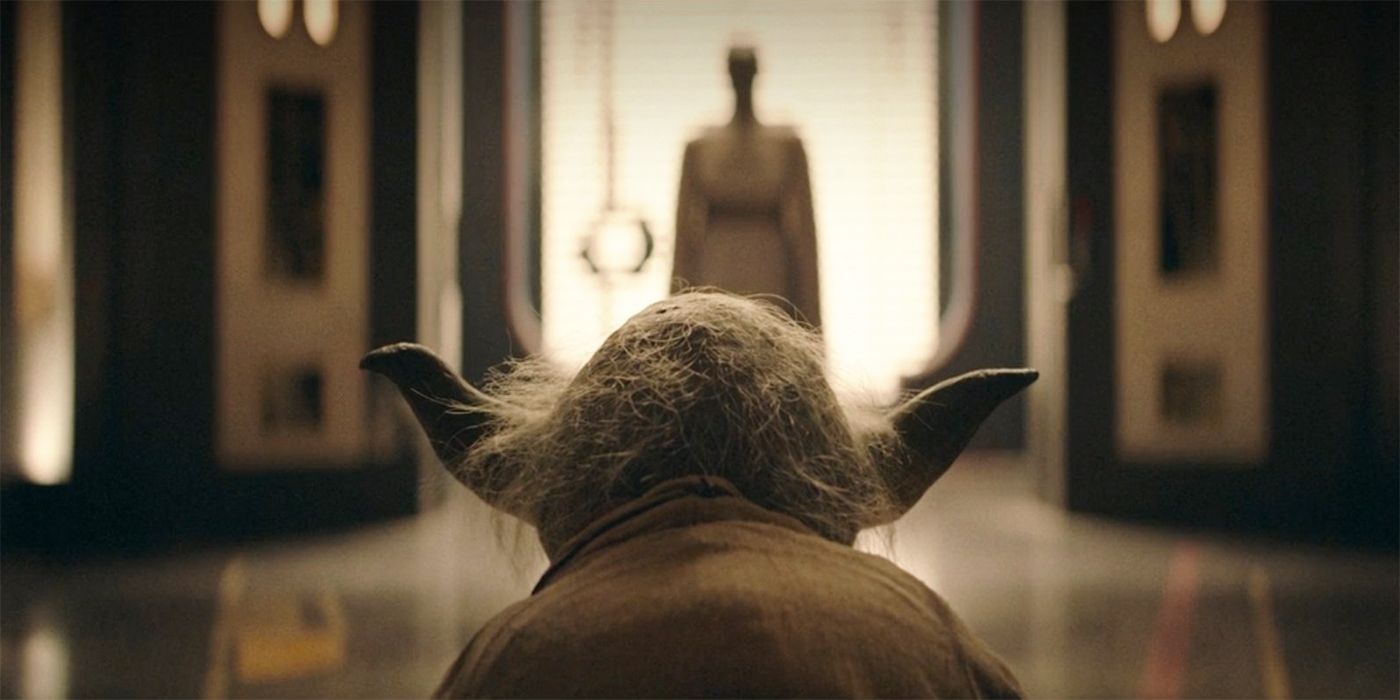
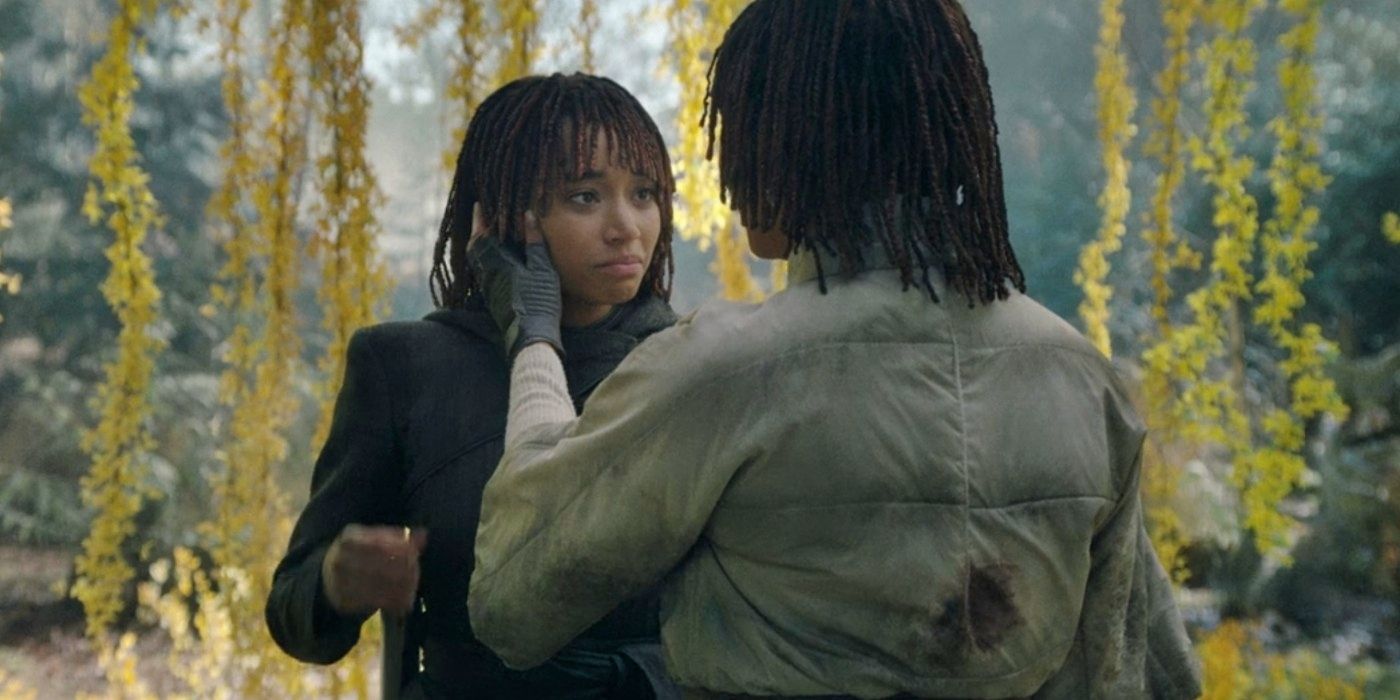
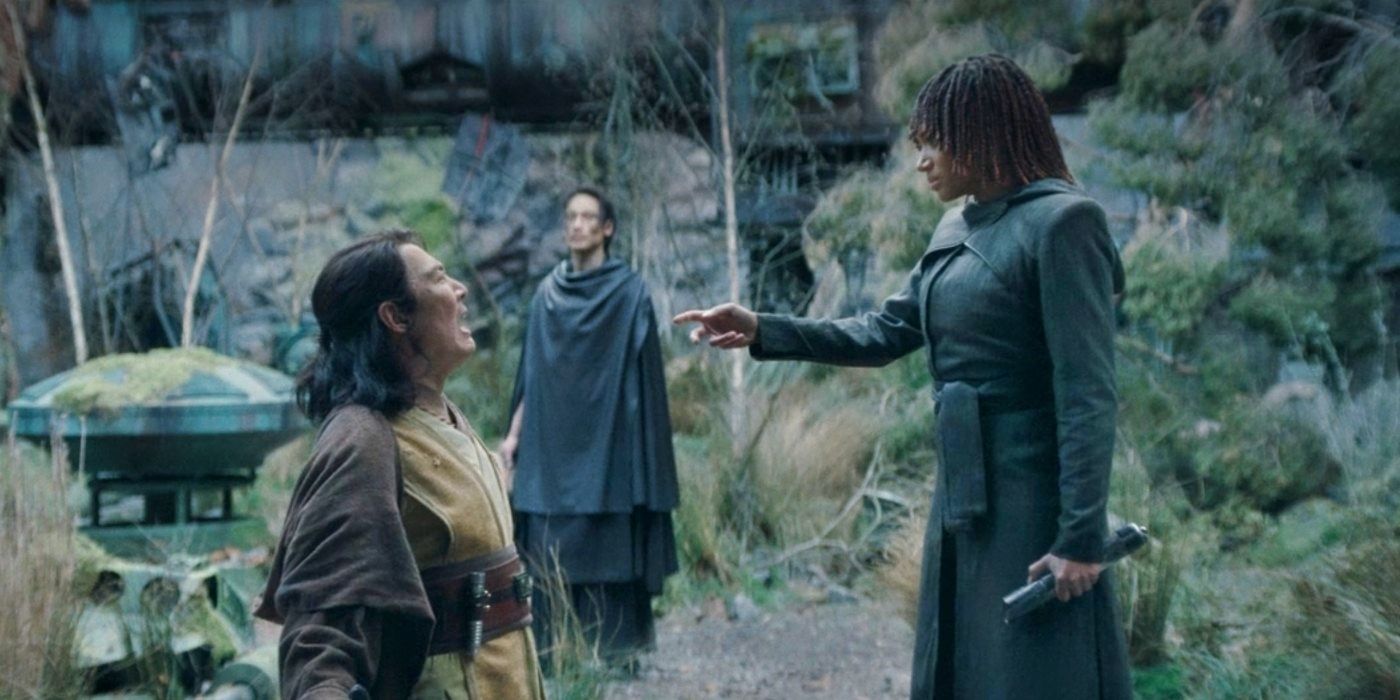
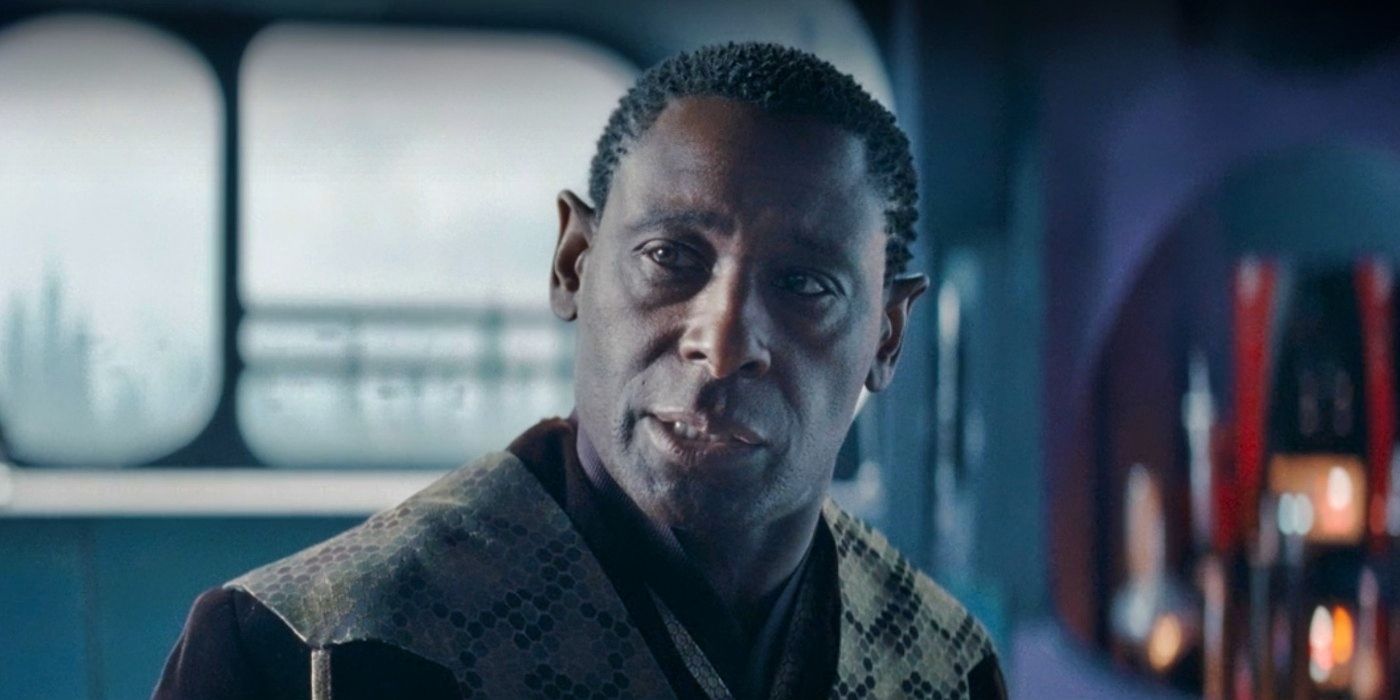
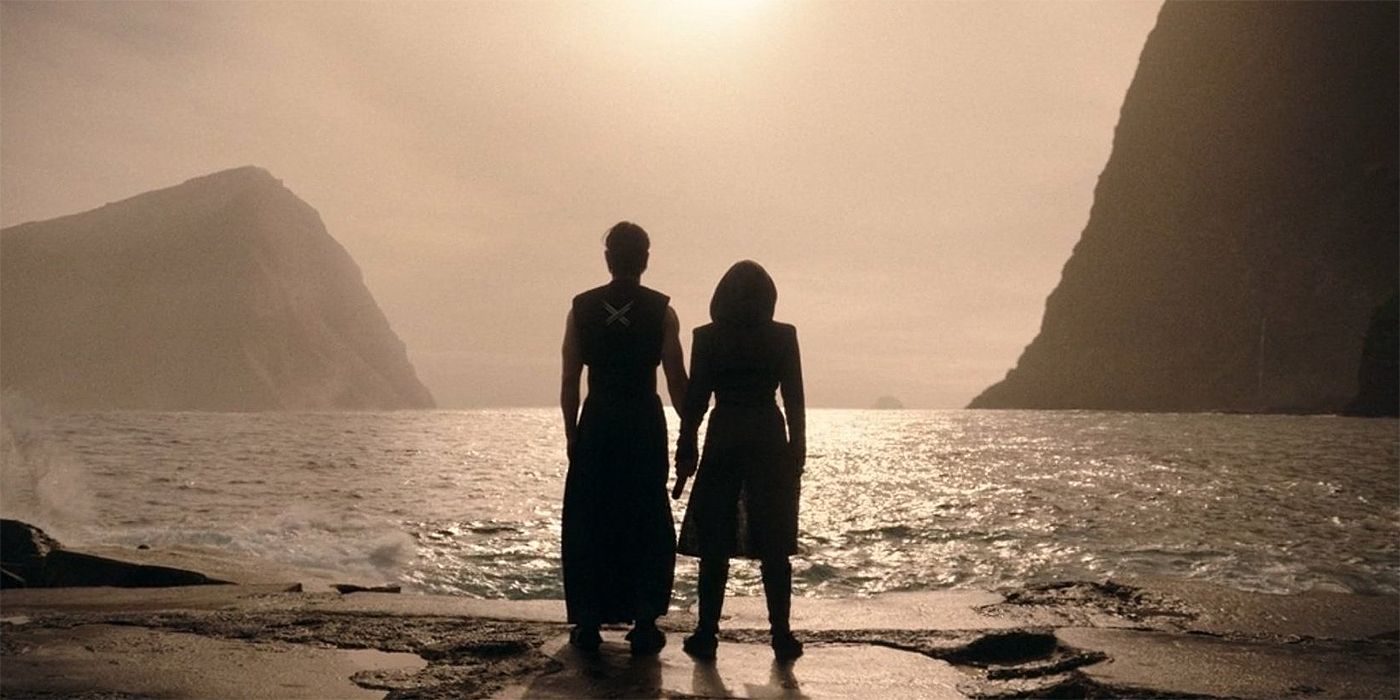





Osha’s ability to corrupt Master Sol’s (Lee Jung-jae) blue kyber crystal and The Acolyte Episode 8’s further exploration of the twins’ unusual origins double down on The Acolyte‘s deep cuts into Star Wars lore, but even with the show’s focus removed from mainstream Star Wars, The Acolyte still occasionally references its popular future timeline. When Headland’s series isn’t introducing mainstream audiences to new galactic minerals like Cortosis, The Acolyte honors its source material by calling back to iconic species and planets from pre-established lore, featuring the first live-action Wookiee Jedi, Kelnacca (Joonas Suotamo), and the planet Carlac featured in Star Wars: The Clone Wars. Through heavy foreshadowing and symbolically-charged dialogue, the series is even able to connect directly to the main Skywalker Saga in a relevant, enjoyable way.
The Acolyte’s finale provides the best example of the show’s ability to reference the franchise’s most crucial events without taking away from the series’ narrative momentum. When Senator Rayencourt (David Harewood) meets with Master Vernestra to receive an update about her murder investigation, the politician is quickly irritated by Vernestra’s deflections and launches into a criticism of the Jedi Order as a whole. During his monologue, he warns Vernestra that a day will come when the Jedi’s attempts to control their emotions will result in a Jedi destroying everything the Republic stands for. As a foreshadowing of Anakin’s later turn, this speech perfectly ties The Acolyte into the main movies by connecting both through their shared themes of the Jedi Order’s flaws, enabling The Acolyte to retain its insulated focus without resorting to tactics as heavy-handed as a high-pressure, continuity-shifting cameo.
‘The Acolyte’ Finale Creates Plenty of Potential for Unique Storylines in the Future
With so many exciting developments taking place at the end of The Acolyte Episode 8, the show also has the potential to expand on this same self-contained focus throughout any number of future storylines. While the twins’ Force-induced birth further connects The Acolyte to Anakin’s legacy in the prequels, Osha’s fall to the dark side gives Star Wars a chance to portray a more nuanced fallen Jedi than any other Star Wars story in recent memory. Her final shot with The Stranger hints at romance intermingling with Osha’s Force training, delivering on the premise of Rey (Daisy Ridley) and Kylo Ren’s (Adam Driver) rushed relationship in Disney’s sequel movies. As The Acolyte finale’s other big-name cameo, Darth Plagueis’ presence in Episode 8 also proves the series doesn’t need to rely on pre-established masters like Yoda, as the latest Sith Lord’s presence promises plenty of exciting firsts for the world of Star Wars.
As a Sith Lord firmly rooted in The Acolyte’s earlier era of Star Wars, Plagueis possesses a unique relationship with the Force that reflects The Acolyte’s focus on expanding the dark side of Star Wars. While his eventual student, Darth Sidious, becomes obsessed with the raw power of the dark side, Plagueis’ fixation trends towards more subtle, manipulative uses of his abilities. Obsessed with immortality and experimenting with midi-chlorians to create life, Plagueis’ interactions with Osha and The Stranger would upend the power structure of the series, taking audiences deeper into the mysteries of The Acolyte’s Sith by introducing another Master tying to Sith Rule of Two. Moreover, exploring these mysteries is far more interesting than seeing the same Jedi council deliberate just as they did in the prequels, making Yoda’s appearance far less exciting than his dark side counterpart.
As a result, while Yoda’s cameo in The Acolyte is useful for connecting Headland’s series to the main Star Wars continuity, Yoda’s presence in the finale isn’t essential to the show. At a time when Star Wars is diving deeper into the alluring nature of the dark side, The Acolyte has little need for its iconic master of the light. The show’s ability to tie its main themes and backstories into those of the main Skywalker Saga already balances the feeling of classic Star Wars with The Acolyte’s innovative approach, while the finale’s introduction of new force abilities and Sith Lords is more compelling than the franchise’s reliance on characters whose stories concluded years ago. If anything, Yoda’s appearance in The Acolyte’s finale can hopefully be taken as a sign of Disney’s faith in the show, as well as a sign that audiences will enjoy another opportunity to join the dark side soon.

